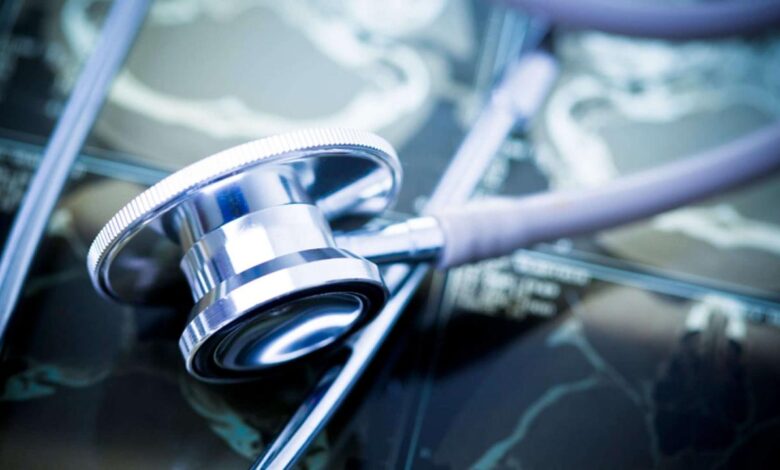
Best Free Medical Images Your Ultimate Guide
Best free medical images are surprisingly easy to find, but knowing where to look and what to look for is key. This isn’t just about finding pretty pictures; it’s about accessing high-quality visuals that are ethically sourced and legally sound for use in educational materials, publications, or even personal projects. We’ll delve into the best sources, explore different image types, and help you navigate the sometimes-tricky world of image licensing and attribution.
From stunning microscopic views to clear anatomical diagrams, the right image can make all the difference in conveying complex medical information effectively. This guide will walk you through finding, using, and properly attributing free medical images, ensuring you avoid any legal pitfalls and create impactful visuals that accurately represent the medical concepts you want to share.
Sources of Free Medical Images
Finding high-quality, free medical images can be a challenge, but several reputable sources offer images under various licensing terms. Understanding these licenses is crucial for ethical and legal use. This post explores some of the best options and compares their offerings.
Reputable Websites Offering Free Medical Images
Several websites provide free medical images, each with its own licensing stipulations. It’s essential to carefully review the license before using any image to ensure compliance.
- Pixabay: Pixabay offers a vast collection of images, including many medical-related ones, under the Pixabay License. This license is very permissive, allowing for commercial use and modification without attribution, though attribution is appreciated. The license is essentially a public domain dedication, offering maximum freedom for users.
- Unsplash: While not exclusively focused on medical images, Unsplash contains a surprisingly large number of relevant photographs, often of high quality. Images are released under the Unsplash License, which allows free use for commercial and non-commercial purposes, without attribution required. This is another very liberal license.
- Wikimedia Commons: This repository of freely usable media files, hosted by the Wikimedia Foundation, contains a wealth of medical images, diagrams, and illustrations. Licensing varies depending on the specific image, but many are available under Creative Commons licenses (CC BY-SA, for example), requiring attribution and potentially sharing under the same license. Always check the individual image’s license.
- NIH Image Gallery: The National Institutes of Health (NIH) offers an image gallery featuring images from their research. Licensing varies and should be carefully checked for each image, but many are available for free use with proper attribution.
- Europe PMC: Europe PMC provides access to a wide range of biomedical literature, and many articles include images. While not a dedicated image repository, it’s a valuable resource for finding images associated with research publications. Licensing varies based on the individual article and its publication agreement.
Image Quality and Resolution Comparison
Comparing image quality and resolution across different sources is subjective, but some general observations can be made. For example, Unsplash often boasts high-resolution, professionally taken photographs, ideal for visually appealing presentations. Pixabay offers a wide range of quality, with some images being quite high-resolution and others less so. Wikimedia Commons offers a diverse range, from high-quality scans of historical illustrations to lower-resolution microscope images, depending on the source and age of the material.
The quality and resolution depend heavily on the individual image rather than the source itself.
Strengths and Weaknesses of Creative Commons Licensed Medical Images
Creative Commons (CC) licenses offer a flexible framework for sharing copyrighted material. The main strength is the clear definition of usage rights, allowing users to understand the permissible uses and necessary attributions. This transparency reduces the risk of copyright infringement. A potential weakness is the variety of CC licenses, requiring careful review of each image’s specific license terms.
Some licenses, such as CC BY-SA, require attribution and the sharing of derivative works under the same license, which might limit flexibility. Another potential weakness is that the quality and resolution can vary widely depending on the image itself.
Comparison of Image Types Available from Different Free Sources, Best free medical images
The following table compares the availability of different image types across three selected sources. Note that this is not exhaustive and the availability of specific image types within each source can change over time.
| Image Type | Pixabay | Unsplash | Wikimedia Commons |
|---|---|---|---|
| X-rays | Moderate | Low | High |
| Microscopic Images | Moderate | Low | High |
| Anatomical Illustrations | Low | Low | High |
| Medical Photographs | High | High | Moderate |
Image Types and Applications
Free medical images are a valuable resource for a wide range of applications, from patient education to scientific publications. Understanding the different types of images available and their appropriate uses is crucial for effective communication and accurate representation of medical information. The diversity of available imagery allows for a layered and comprehensive approach to conveying complex medical concepts.The availability of free medical images significantly expands access to visual learning materials, particularly in educational settings and resource-constrained environments.
This accessibility democratizes medical knowledge, making it easier for students, healthcare professionals, and the general public to understand complex medical concepts.
Anatomical Diagrams
Anatomical diagrams offer clear, simplified representations of the human body’s structures. These images are particularly useful for educational purposes, allowing learners to visualize the relationships between different organs and systems. For instance, a free, high-quality diagram of the circulatory system can be incorporated into a presentation for medical students, clearly illustrating the heart, arteries, veins, and capillaries. Similarly, detailed diagrams of the skeletal system or nervous system can enhance understanding in anatomy courses.
Their simplicity makes them ideal for introductory materials or patient explanations of procedures involving specific body parts.
Microscopic Images
Microscopic images provide visual access to the cellular and tissue levels of the body. These images are invaluable for pathology education and research. For example, a free image of cancerous cells under a microscope can be used to illustrate the differences between healthy and diseased tissue in an oncology presentation. Similarly, images depicting various types of bacteria or viruses can be used in microbiology courses or public health campaigns.
The high level of detail in these images allows for a deeper understanding of disease processes at a fundamental level.
Clinical Photography
Clinical photography captures real-world medical scenarios, including surgical procedures, patient conditions, and medical devices. These images can be used to illustrate medical procedures in textbooks or patient education materials. For example, a free image showing a correctly applied bandage can be used in a first-aid training manual. Images depicting various skin conditions or wound healing stages can enhance patient understanding and compliance with treatment plans.
The use of clinical photography requires careful consideration of patient privacy and ethical guidelines.
Examples of Free Medical Images in Educational Presentations
A presentation on the digestive system could effectively use a combination of anatomical diagrams showing the organs involved, microscopic images of intestinal lining, and clinical photographs illustrating endoscopic procedures. This multi-faceted approach creates a more comprehensive and engaging learning experience. A presentation on cardiovascular disease could use diagrams of the heart, microscopic images of plaque buildup in arteries, and clinical photographs of angioplasty procedures.
Hypothetical Medical Infographic: Understanding Diabetes
Imagine a medical infographic designed to educate patients about diabetes. It would incorporate:
- An anatomical diagram of the pancreas, highlighting the islets of Langerhans and insulin production.
- Microscopic images comparing healthy and damaged pancreatic beta cells.
- Clinical photographs illustrating healthy and unhealthy lifestyles, showing examples of balanced vs. unbalanced diets and regular vs. sedentary activities.
- A simple chart depicting blood glucose levels and their impact on the body.
This infographic, using only free medical images, could effectively communicate complex information about diabetes in a clear, visually appealing manner, improving patient understanding and potentially leading to better self-management.
Image Attributes and Considerations
Finding free medical images is only half the battle. The real challenge lies in selecting images that are not only visually appealing but also accurate, ethically sourced, and suitable for their intended purpose. This requires careful consideration of several key attributes.Selecting high-quality free medical images involves understanding the nuances of resolution, color accuracy, and file format. For presentations or publications, high-resolution images (at least 300 DPI) are essential for crisp, clear visuals.
Color accuracy is crucial for diagnostic purposes; subtle color variations can be significant in medical imaging. Common file formats like JPEG, PNG, and TIFF offer different advantages; JPEGs are good for compression but can lose some detail, while PNGs support transparency and are better for illustrations, and TIFFs are often preferred for their lossless compression and high quality.
The choice depends on the specific application.
High-Quality Image Selection Best Practices
Choosing the right image is paramount. For instance, an image used in a patient education pamphlet requires a different level of detail and style than an image used in a scientific publication. Patient education materials benefit from clear, easily understandable visuals, while scientific publications need images with high resolution and accurate anatomical representation. Consider the target audience and the intended message when making your selection.
Always prioritize images that are sharp, well-lit, and clearly labeled. Avoid images that are blurry, pixelated, or contain distracting elements.
Accurate Image Representation in Medical Contexts
Accurate representation is non-negotiable in medical contexts. Misrepresentation, even unintentional, can lead to misdiagnosis, incorrect treatment, and potentially harm patients. Images used for educational or diagnostic purposes must be true representations of the anatomical structures or medical conditions they depict. Any alterations or manipulations should be clearly indicated, and the source of the image should be verifiable.
For example, an image of a cancerous lesion should accurately reflect the characteristics of the lesion, avoiding any artistic enhancements that could obscure its true appearance.
Ethical Concerns Associated with Free Medical Images
The use of free medical images presents several ethical considerations. Firstly, ensure that the images are not used without proper attribution and that copyright restrictions are adhered to. Many free image sources require specific attribution, and failure to comply constitutes copyright infringement. Secondly, the privacy and confidentiality of patients must be protected. Images should be anonymized to prevent identification of individuals.
Thirdly, the context in which images are used should be carefully considered to avoid perpetuating stereotypes or biases. For example, using images that disproportionately represent certain demographics might reinforce existing health disparities.
Essential Metadata Elements for Free Medical Images
Metadata is crucial for responsible image usage. Before using a free medical image, always check for the following metadata elements:
- Source: The origin of the image (website, database, etc.)
- License: The specific license governing the image’s use (e.g., Creative Commons).
- Attribution Requirements: Any requirements for acknowledging the image’s creator or source.
- Date Created: The date the image was originally created.
- Image Description: A detailed description of the image’s content.
- Patient Consent (if applicable): Confirmation that informed consent was obtained for the image’s use.
Attribution and Copyright

Source: ctfassets.net
Using free medical images is a fantastic way to enhance your projects, but it’s crucial to understand the legal aspects of copyright and attribution. Failing to properly attribute these images can lead to serious consequences, from takedown notices to legal action. This section clarifies the requirements for proper attribution under various licenses and highlights common pitfalls to avoid.Proper attribution ensures you’re complying with the license terms and giving credit where it’s due.
Different licenses have different requirements, and understanding these nuances is essential for responsible image use. Ignoring these requirements could lead to copyright infringement, even if the image is labeled as “free.”
License Requirements and Attribution Examples
The specific attribution requirements vary significantly depending on the license under which the image is released. Some licenses are very permissive, requiring only a link back to the source, while others may have more stringent requirements. Here are a few examples:
- Creative Commons Zero (CC0): This license waives all copyright and related rights. No attribution is required, although providing a link to the original source is always a good practice to show appreciation.
- Creative Commons Attribution (CC BY): This license requires attribution to the creator. A typical attribution might look like this: “Image by [Author Name] / [Source URL]”. The exact phrasing might need adjustment depending on the specific requirements Artikeld by the creator.
- Creative Commons Attribution-ShareAlike (CC BY-SA): Similar to CC BY, but it also requires that any derivative works (modifications of the original image) be licensed under the same or a compatible license. Attribution is still mandatory.
- Creative Commons Attribution-NoDerivs (CC BY-ND): This license allows for sharing but prohibits modification of the image. Attribution is required, similar to CC BY.
- Public Domain: Images in the public domain are not subject to copyright restrictions and typically require no attribution, though it’s still considered good practice to credit the source if known.
Legal Implications of Improper Attribution
Failure to properly attribute free medical images can result in various legal repercussions. Copyright holders can issue takedown notices, demanding removal of the image from your website or publication. In more serious cases, legal action could be taken, leading to financial penalties and damage to your reputation. The severity of the consequences depends on factors such as the nature of the infringement, the extent of use, and the copyright holder’s response.
A single instance of improper attribution might result in a warning, while repeated or egregious violations could lead to substantial fines. Consider the case of a medical journal using an image without proper attribution; this could lead to retraction of the publication and damage to the journal’s credibility.
Common Attribution Mistakes
It is crucial to avoid common mistakes when attributing free medical images to prevent legal issues.
- Incorrect or incomplete attribution: Providing only a partial name or an incorrect URL can be considered insufficient attribution.
- Missing attribution altogether: This is a clear violation of copyright in most cases.
- Failing to follow the specific license terms: Each license has specific requirements; not adhering to them constitutes infringement.
- Using an image without checking its license: Always verify the license before using an image.
- Assuming all “free” images are free to use without attribution: Many “free” images still require attribution under specific licenses.
Alternative Resources and Strategies: Best Free Medical Images

Source: vecteezy.com
Finding high-quality medical images without breaking the bank can be challenging. While freely available resources exist, understanding alternative strategies and weighing the pros and cons of free versus paid options is crucial for any project. This section explores different avenues for acquiring medical imagery and techniques for enhancing their visual appeal.
Beyond the readily available free image repositories, several other methods can provide access to medical visuals. Collaborating with medical professionals, for instance, offers a unique opportunity to obtain images directly from the source. This approach often yields high-resolution, clinically relevant images tailored to specific needs. However, it requires establishing connections within the medical community and navigating potential ethical and legal considerations regarding patient consent and image usage.
Utilizing Public Domain Resources and Collaborations
Public domain resources, such as those hosted by government agencies or historical medical archives, offer a wealth of older medical images free from copyright restrictions. These images can be valuable for historical research or educational purposes. However, their quality might be lower than modern images, and the subject matter may not always be perfectly relevant to contemporary medical practices.
Furthermore, collaborating with medical professionals, researchers, or hospitals can provide access to images not readily available online. Building strong professional relationships can unlock access to a vast library of high-quality, ethically sourced images. This requires careful negotiation and adherence to ethical guidelines, including obtaining informed consent from patients where necessary. The advantages include access to unique images and the possibility of building long-term collaborations.
The disadvantages are the time investment in building relationships and navigating potential bureaucratic hurdles.
Free Versus Paid Medical Images: A Comparison
The decision to use free or paid medical images hinges on several factors, primarily budget, quality requirements, and intended use. Free images, readily available online, offer significant cost savings. However, they might have limitations in terms of resolution, licensing restrictions, and creative commons attribution requirements. Paid images, on the other hand, usually boast higher resolution, broader usage rights, and often come with professional-level support.
The cost, however, can be a significant barrier for some projects. A cost-benefit analysis is crucial; if high quality and unrestricted usage are paramount, the investment in paid images might be justified. If the project is small-scale or for educational purposes, free images with appropriate attribution may suffice.
Creating Simple Medical Illustrations Using Free Software
Several free and open-source software packages allow for the creation of simple yet effective medical illustrations. GIMP (GNU Image Manipulation Program), for example, provides a robust set of tools for image editing, comparable to paid software like Photoshop. Inkscape, another free program, is ideal for creating vector graphics, suitable for diagrams and illustrations requiring scalability. Using these tools, one can create diagrams of anatomical structures, simplified representations of medical procedures, or infographics explaining complex medical concepts.
For example, one could create a simple diagram of the heart using Inkscape’s vector tools, ensuring clarity and accuracy without the need for complex rendering techniques. The advantage of using free software lies in accessibility and cost-effectiveness; the disadvantage is the potential learning curve involved in mastering the software’s features.
Enhancing Visual Appeal While Maintaining Accuracy
Improving the visual appeal of medical images doesn’t necessitate compromising accuracy. Simple techniques, such as adjusting contrast and brightness in GIMP or applying subtle color correction, can significantly enhance the image’s clarity and visual impact. Careful cropping can also eliminate distracting elements while focusing attention on the crucial anatomical features. Using consistent color palettes and a clear visual hierarchy can improve overall readability and comprehension.
Finding the best free medical images can be a real challenge, especially when you need high-quality visuals for your projects. But did you know that creating engaging video content can really boost your reach? Check out this awesome guide on getting it on with YouTube to learn how to make your medical image presentations even more impactful.
Then, once your YouTube strategy is set, you can focus again on sourcing those perfect free medical images!
For instance, using a warm color palette for healthy tissues and cooler colors for diseased tissues can enhance visual differentiation without misrepresenting the anatomical structures. Remember, the goal is to enhance the visual presentation, not to distort or misrepresent the medical information conveyed.
Epilogue

Source: wallpapertag.com
Finding and using best free medical images effectively is a balancing act between quality, legality, and ethical considerations. By understanding licensing, attribution requirements, and the nuances of different image types, you can create compelling and accurate visuals that inform, educate, and engage your audience. Remember, responsible image use is crucial – so always check the license, give proper attribution, and strive for accurate representation.
Happy visualizing!
FAQ Section
What if a free medical image’s license changes after I’ve used it?
If a license changes after you’ve used an image, you should review the updated terms. If the new terms are incompatible with your use, you may need to remove the image or seek permission from the copyright holder.
Are all “free” images truly free of restrictions?
No. Even images labeled “free” often come with usage restrictions, usually Artikeld in a Creative Commons license or similar agreement. Always read the license before using any image.
How can I ensure I’m using images ethically?
Ethical image use involves respecting the rights of the creator, properly attributing the image, and ensuring the image is not misleading or used out of context, particularly in medical contexts where accuracy is paramount.
What’s the difference between Creative Commons licenses?
Creative Commons licenses vary in terms of the level of permission granted. Some allow modification and commercial use, while others may restrict either or both. Always carefully review the specific license terms.
